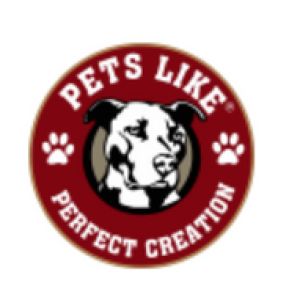What to Look for in a Dog Belt for PuppyPosted by Petslike on November 2nd, 2022 There are a few different features that you should look for in a Dog Belt for Puppy. These features include non-restrictive design, two leash-connection points, and cushioned panels. Using these features will make it easier to train your puppy. These features are essential for keeping your puppy from pulling while out on walks. For more details Contact @9845994396 Non-restrictive designA non-restrictive dog harness will allow your dog to have a more natural range of motion. Harnesses that are restrictive can cause stress on the shoulder joints and upper back, and can cause forelimb lameness. Non-restrictive harnesses feature a Y-shaped design over the chest, which allows the front legs to extend and retract naturally. A non-restrictive dog belt is made of flexible material that stretches and does not restrict the dog's movement. Some of the most common models have straps across the chest and between the front legs of the dog. These products are ideal for performance dogs because they do not restrict the dog's movements. For more details Contact @9845994396 Easy-release side bucklesDesigned for your growing pup, adjustable side-release buckle dog collars are an easy way to keep your pup safe and comfortable. These collars go on and off in seconds. They feature sonic-welded seams, which are 80% stronger than stitched seams. They also feature a heavy-duty side-release buckle and steel D-ring for maximum comfort and safety. Your dog's name or message can be embroidered in gold, red, blue, or white contrast thread. Side-release collars are one of the most popular types of dog collars. They are easy to use and come in many different styles. They work best for larger breeds with wide, round, or thin heads, as smaller heads may slip out of them. For more details Contact @9845994396 Two leash-connection pointsUsing two leash-connection points on your puppy's dog belt is a great idea for safety reasons and to teach your puppy subtle physical cues. You're already giving your dog subtle physical cues when you hold the leash, so you can use the extra connection to give your puppy a more specific cue to move in a particular direction. Make sure to reward your puppy when he moves in a direction you want him to go. Two leash-connection points on a dog belt for puppy harness can be connected to a leash in several ways. Some leashes have two leash-connection points, while others have just one. The two-point design allows you to adjust your puppy's harness to fit the size of your dog. You can also adjust the harness's fit using a Velcro-overlap enclosure or plastic buckle. For more details Contact @9845994396 Cushioned panelsIf you're looking for a dog belt for your puppy, you'll want to buy a model with cushioned panels. They make the straps much softer and will help prevent snagging. Some models also have reflective strips on the straps for added visibility. You'll also want to look for a harness with an adjustable back handle for easy operation. For more details Contact @9845994396 Mesh panelsA mesh panel dog belt is soft and easy to put on your dog. It fits snugly around your dog's girth and is fastened in the center with a cord lock. You can train your dog to enter the harness by lifting the front left leg and letting it slip in. The mesh panel on the chest is easy to grab and allows you to catch your pup quickly. For more details Contact @9845994396 ColorsThere are a number of colors you can use for your puppy's dog belt. Yellow is usually associated with aggressive dogs, but this is not always the case. This color is actually helpful for dogs that are unsure of their own behavior, such as those that are rescued from shelters or do not yet have the proper training. It also works well for service dogs in training. The Association of Professional Dog Trainers says the yellow ribbon can deter aggressive behavior in some dogs. In addition to identifying your puppy's breed, you can also choose the color to match his or her personality. Reds and oranges are traditionally warm colors. But other colors can be considered cool, such as blues and purples. However, you need to pay attention to the tint of these colors. A bias towards blue makes the color appear warm. For more details Contact @9845994396 Like it? Share it!More by this author |


